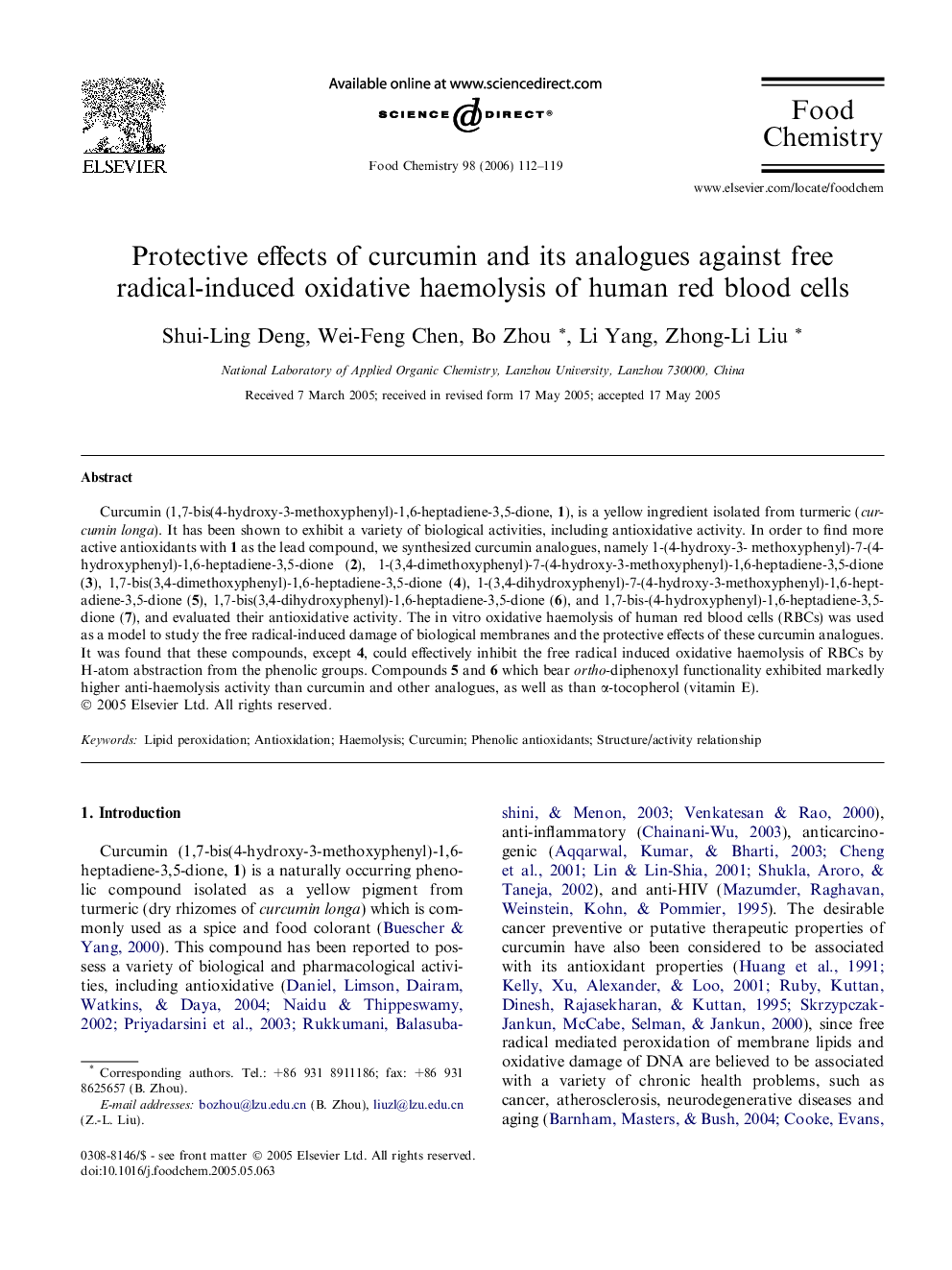| Article ID | Journal | Published Year | Pages | File Type |
|---|---|---|---|---|
| 1191203 | Food Chemistry | 2006 | 8 Pages |
Curcumin (1,7-bis(4-hydroxy-3-methoxyphenyl)-1,6-heptadiene-3,5-dione, 1), is a yellow ingredient isolated from turmeric (curcumin longa). It has been shown to exhibit a variety of biological activities, including antioxidative activity. In order to find more active antioxidants with 1 as the lead compound, we synthesized curcumin analogues, namely 1-(4-hydroxy-3- methoxyphenyl)-7-(4-hydroxyphenyl)-1,6-heptadiene-3,5-dione (2), 1-(3,4-dimethoxyphenyl)-7-(4-hydroxy-3-methoxyphenyl)-1,6-heptadiene-3,5-dione (3), 1,7-bis(3,4-dimethoxyphenyl)-1,6-heptadiene-3,5-dione (4), 1-(3,4-dihydroxyphenyl)-7-(4-hydroxy-3-methoxyphenyl)-1,6-heptadiene-3,5-dione (5), 1,7-bis(3,4-dihydroxyphenyl)-1,6-heptadiene-3,5-dione (6), and 1,7-bis-(4-hydroxyphenyl)-1,6-heptadiene-3,5-dione (7), and evaluated their antioxidative activity. The in vitro oxidative haemolysis of human red blood cells (RBCs) was used as a model to study the free radical-induced damage of biological membranes and the protective effects of these curcumin analogues. It was found that these compounds, except 4, could effectively inhibit the free radical induced oxidative haemolysis of RBCs by H-atom abstraction from the phenolic groups. Compounds 5 and 6 which bear ortho-diphenoxyl functionality exhibited markedly higher anti-haemolysis activity than curcumin and other analogues, as well as than α-tocopherol (vitamin E).
